Section of a bimetallic radiator: the main advantages, the
Many types of batteries consist of individual elements, which are called sections, and one of the highest quality options is bimetallic radiators. This group of products has a number of indisputable advantages due to which it occupies a leading position in the market, especially if quality and reliability are important to customers.
In this article we will look at what the section consists of, what are its distinctive features and what criteria should be considered when choosing.
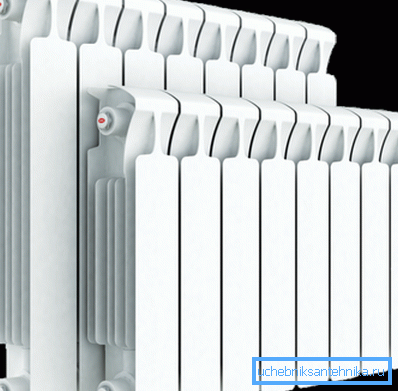
The main advantages of this option
To begin with, we will determine what advantages the use of this group of products gives, there are quite a few of them, therefore we will touch only the most important and significant ones:
| Efficiency | The volume of the bimetallic radiator section is small, so that the coolant heats up very quickly, and it takes much less energy to heat the room. Also, if you have a thermostat, you can very accurately adjust the temperature in the room, the deviation will be a maximum of 1-2 degrees |
| Strength | The internal system consists of steel pipes, which are highly reliable and durable. They prevent corrosion of aluminum, which significantly prolongs the life of the radiator. For the most difficult operating conditions, we recommend choosing options with a stainless steel core; such sections can withstand the most adverse conditions without compromising the integrity of the material |
| Efficiency | Often there is the question of how many kilowatts in one section of a bimetallic radiator, in fact, this indicator depends on the product brand and its size, but one thing is certain: power will meet the highest standards, on average, this indicator ranges from 160 to 220 watts. which is much higher than most other analogues |
| Versatility | If you initially made miscalculations and put too few edges, then you can easily figure out how to add sections to a bimetallic radiator, you do not need special equipment and skills, everything is quite simple and fast |
Note! Another undoubted advantage is the high quality of coloring, each section is covered with high-quality composition, the work is done in two stages to ensure the best reliability.
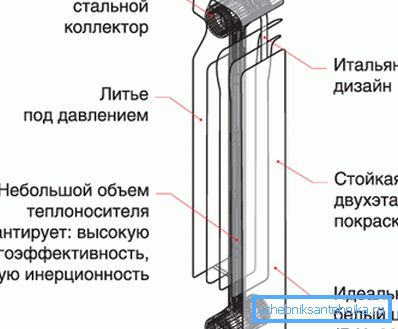
Features of the choice of a specific option and settlement work
Even though bimetallic products are very efficient and economical, with incorrect calculations, the system will not function as needed, so first of all you need to determine all the criteria, which we will discuss below.
What factors need to be considered
First, you should decide where the heating elements will be located. The most reasonable way is to place them under the windows in order to create a thermal curtain in front of the window openings, sometimes batteries can be placed in other places, everything again depends on the characteristics of the room and its dimensions.
Of the most important parameters, we note the following:
- Bimetallic radiator section size in height, You need to take measurements to know how much space is available. Further, 10 cm from the floor is taken away from the obtained value, 10 cm from the window sill is 10 cm; also do not forget that the back wall should not be located close to the wall, there should be a gap of 50 mm. The final figure will tell you which option should be used in your case.
Note! Do not forget that the sections are classified according to the center distance, which can be from 20 to 180 cm, while the actual size will be 7-8 cm larger, depending on the manufacturer of the product.

- The width of the bimetallic radiator section is always standard and is 80 mm., Based on this, you determine how much construction the structure will take horizontally. Most of the time there is enough space, but sometimes the gap is too narrow, in which case the best option would be to install two small batteries next to each other or separately.
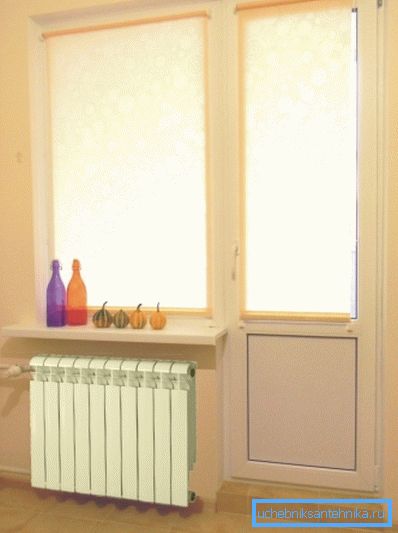
- The dimensions of the bimetal radiator section include not only the width and height, but also the depth (or thickness), it is standard and is 85 mm, that is, taking into account the indentation from the wall, the construction will protrude 135 mm (in the extreme case, it can be positioned a little closer, but a gap of less than 30 mm is undesirable).

- Also at this stage you should consider the option of attaching the design. Although the products are not heavy, for example, the weight of a bimetallic radiator on 10 sections with a height of 580 mm is slightly more than 15 kg, but a certain load on the wall will still be present, so if the surface is sutured with drywall, then we recommend making a stiffener at the level of the brackets.
Design work
Now we will understand how to calculate the number of sections of bimetallic radiators for a particular room.
This type of work can be done with your own hands, and this will help you a simple instruction:
- To begin with, it is necessary to calculate the volume of the room, everything is very simple here: the length, width and height are measured, after which the resulting figures are multiplied together. The result will be the volume of space in cubic meters.

- According to the norms of SNiP per one cubic meter of air in the room should be 41 W of thermal energy, if the building is properly insulated, plastic windows are installed, then 34 W is enough per cubic meter. Consider an example: a 3x4 room with a height of 2.5 meters has a volume of 30 m3, for example, our house is not very well insulated, which means it multiplies 30 by 41 and we get 1230 watts.
- Based on this total, it is possible to calculate the number of bimetallic radiator sections, but it is better to introduce correction factors for greater accuracy. For example, the diagram below shows how heat is lost in private houses, as regards urban development, then it is necessary to add 10% to each window, from 5 to 10% if the radiator is located in a niche and 25% if the room is angular.
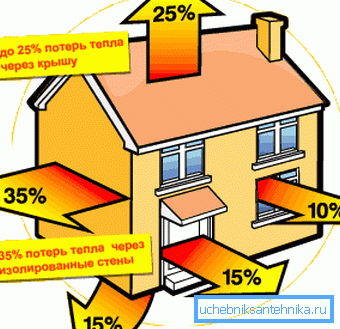
Now let's figure out how to calculate the number of bimetallic radiator sections, in the example above, we learned that 1230 W of thermal power is required, for example, there are two outer walls and one window in the room, that is, we need to add another 35% to the result, 1660 W will be obtained. Take for example a section with a power of 190 W, but as you know, the system does not work constantly at maximum temperature, so it’s better to add another 10-15% of the reserve, in the end it turns out that we need a bimetallic radiator for 10 sections.
You can use an even simpler option in order not to bother with the calculations - find the online calculator, enter all the data in it and get the finished result. Everything is quite simple and fast, the most important thing is to correctly enter all the necessary values.
Often there is a question, what is the maximum number of sections in a bimetallic radiator that can be set? In building codes, there is no indication of this, there is only a recommendation that the structure should be assembled in the factory. Of the options produced, the largest are from 14-18 sections, this number can be considered a reasonable maximum, if you need more, it is easier to break system for two blocks.
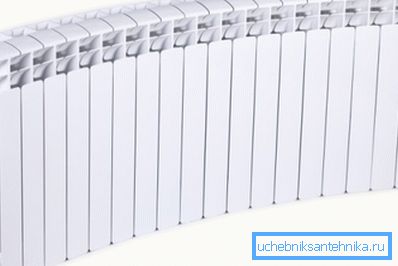
Conclusion
Bimetallic products are good because you define the number of sections yourself, as well as their configuration. The video in this article will tell you more about the product group in question and help you understand some of the nuances even better.